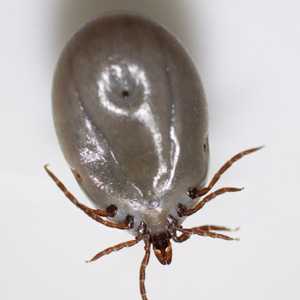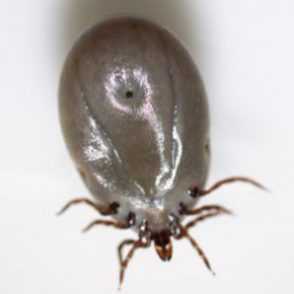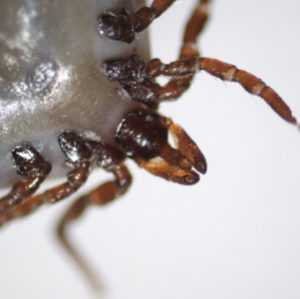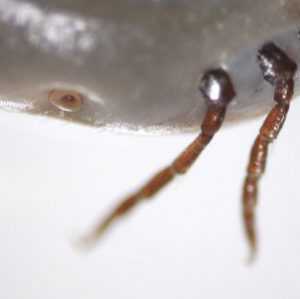
Case #447 - July, 2017
An engorged tick was delivered to a laboratory for identification. Figures A–E show morphologic features observed using a dissecting microscope. What is your identification? Based on what features?

Figure A

Figure B

Figure C

Figure D

Figure E
Case Answer
This was an adult, engorged female Ixodes spp. tick. (most likely Ixodes scapularis). Diagnostic morphologic features shown included:
- Inornate scutum (dorsal shield) that only covers part of the upper body surface.
- Palps and hypostome long in relation to the basis capituli.
- Presence of an inverted anal groove extending anteriorly around the anus.
- Absence of festoons.
- Large spiracular plates.
Ixodes spp. ticks are arthropod vectors that can transmit Borrelia burgdorferi (Lyme disease), tick-borne encephalitis (TBE), and Babesia spp. Identification of ticks to the species level can be difficult and best deferred to a trained entomologist.
More on ticks
This case was kindly provided by Cadham Provincial Public Health Laboratory, University of Manitoba, Winnipeg, MB
Images presented in the monthly case studies are from specimens submitted for diagnosis or archiving. On rare occasions, clinical histories given may be partly fictitious.
DPDx is an education resource designed for health professionals and laboratory scientists. For an overview including prevention and control visit www.cdc.gov/parasites/.
- Page last reviewed: September 19, 2017
- Page last updated: September 20, 2017
- Content source:
- Global Health – Division of Parasitic Diseases and Malaria
- Notice: Linking to a non-federal site does not constitute an endorsement by HHS, CDC or any of its employees of the sponsors or the information and products presented on the site.
- Maintained By:


 ShareCompartir
ShareCompartir